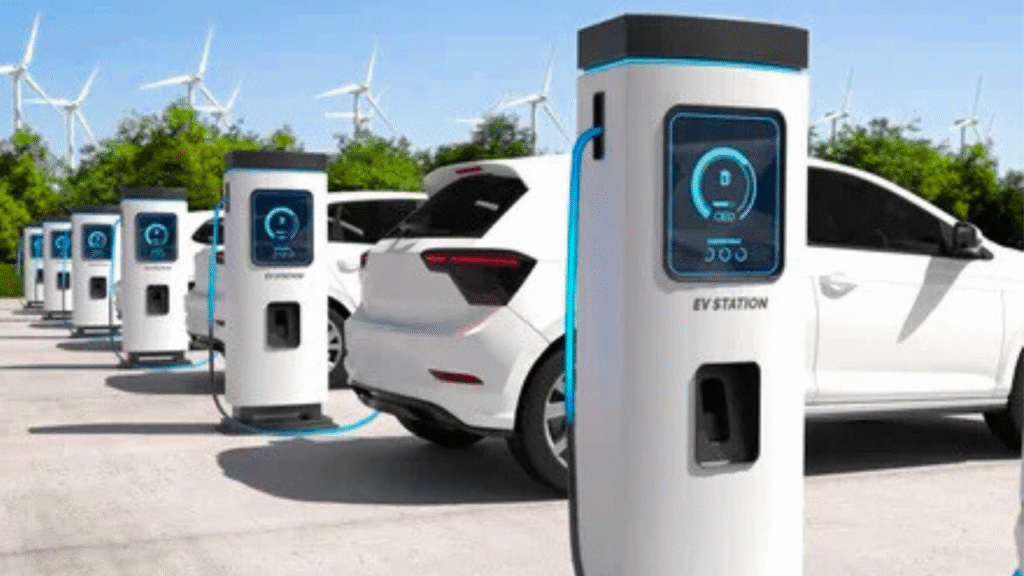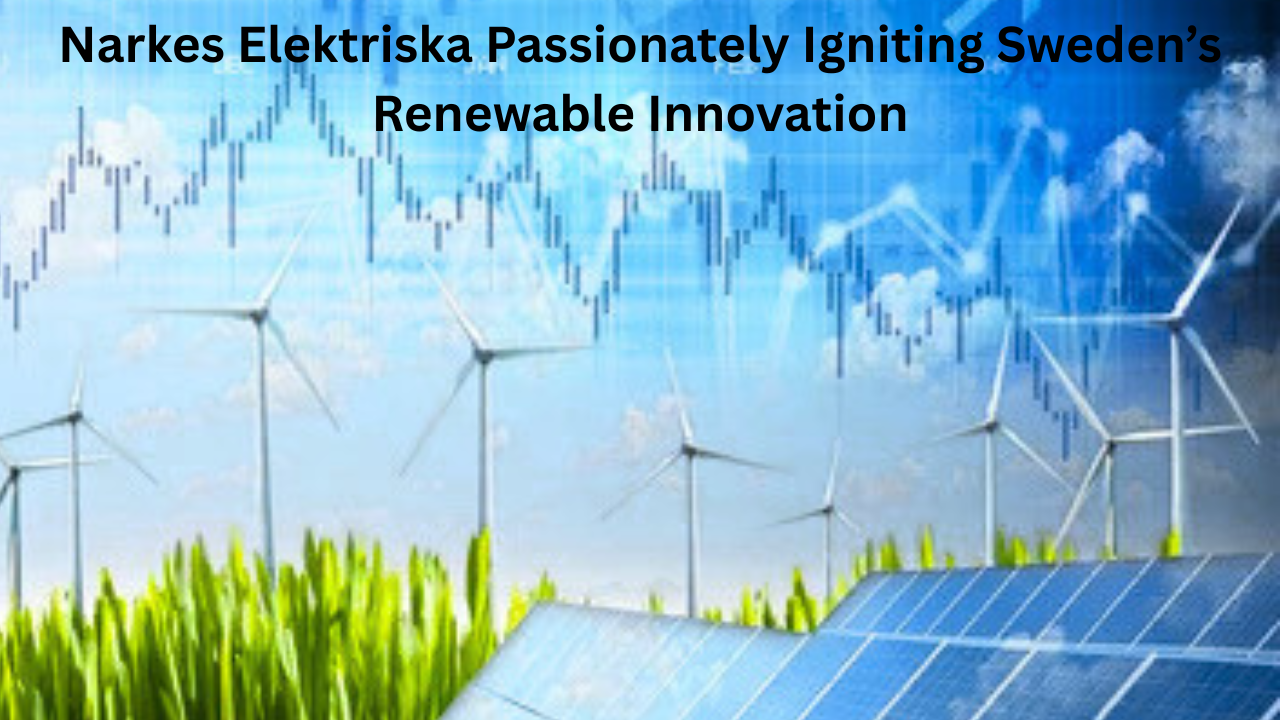How does a company founded in 1931 stay relevant in 2025’s rapid renewable transformation? The answer lies in adaptation, investment, and a workforce committed to change. Narkes Elektriska operates 60 locations across Sweden with 2,500 professionals delivering everything from basic installations to advanced grid solutions. Their transition mirrors Sweden’s broader shift toward carbon neutrality by 2045.
The company recently announced a 42% carbon reduction target, moving beyond traditional services into smart grids and EV infrastructure. What makes this shift remarkable isn’t just the technology; it’s how a nearly century-old firm rebuilt its business model without losing its identity. This transformation offers lessons for any organisation navigating the renewable transition.
Table of Contents
Traditional Roots to Renewable Pioneer
Narkes Elektriska didn’t start as a green technology company. Founded as part of ASEA in 1931, it spent decades focused on conventional installations, repairs, and distribution. Independence came in 1949, and by 2005, the company began specialising in larger industrial projects. But the real shift started around 2010 when leadership recognised that Sweden’s energy landscape was changing permanently.
| Period | Business Focus | Market Position | Transformation Stage |
| 1931-1949 | ASEA division, basic installations | Regional contractor | Foundation building |
| 1949-2005 | Independent operations, repairs, and distribution | Established service provider | Growth and stability |
| 2005-2010 | Industrial project specialization | Industry leader | Traditional peak |
| 2010-2025 | Renewable integration, smart grids, EV infrastructure | Innovation pioneer | Green transformation |
Johan Broberg, Olof G Wikstrom, and Gustaf Svensson now guide the board with decades of combined experience. Under their direction, the company invested heavily in training programmes that taught traditional electricians about solar integration, battery storage, and digital monitoring systems. This wasn’t a complete overhaul; it was layering new capabilities onto proven expertise.
The transition required significant capital. Equipment for testing renewable installations differs from conventional tools. Diagnostic software for smart grids demands ongoing subscriptions. Vehicle fleets needed upgrades to transport heavier battery systems and solar panels. Despite these costs, the company maintained profitability by serving both markets simultaneously during the transition period.
Smart Grid Technology Is The Digital Backbone
Sweden’s electrical grid is undergoing massive digitalisation. Smart grid technology allows real-time monitoring of power flow, automatic fault detection, and dynamic load balancing. Narkes Elektriska deployed teams trained specifically in IoT-connected systems that communicate with central monitoring stations. These installations reduce energy loss by 15-20% compared to passive systems.
One project involved upgrading a municipal power network in central Sweden. The team installed sensors at 200 distribution points, connected them to a cloud-based platform, and integrated automated circuit breakers that respond to overload conditions in milliseconds. The municipality reported 30% fewer outages in the first year and reduced maintenance costs by 18%.
Digital integration creates complexity. Older electricians accustomed to analog systems needed extensive retraining. The company partnered with technical schools to create certification programmes combining hands-on experience with classroom theory. This investment paid off; client satisfaction scores for smart grid projects consistently exceed 95%.
Sweden’s Renewable Energy for a Greener Tomorrow
Swedish businesses and homeowners increasingly demand renewable energy solutions that Sweden can trust. Narkes Elektriska responded by developing specialised teams for solar installations, wind integration, and hybrid systems combining multiple sources. Their approach emphasises reliability over cutting-edge experimentation; clients need systems that work consistently, not beta versions.
Solar energy services represent the fastest-growing segment. Residential installations typically range from 15 to 40 panels, depending on roof size and energy consumption patterns. Commercial projects scale up dramatically; one warehouse installation included 800 panels producing 350 kilowatts at peak output. The company handles permitting, installation, grid connection, and ongoing maintenance through comprehensive service packages.
Industrial electrical services expanded to include renewable integration for manufacturing facilities. A textile plant near Stockholm wanted to reduce grid dependence while maintaining 24/7 operations. The solution combined rooftop solar, battery storage providing 4 hours of backup power, and intelligent switching systems that optimise between solar, battery, and grid sources based on real-time pricing and availability.
Hybrid Energy Installations
Hybrid energy installations solve a problem pure renewable systems face: intermittency. Solar produces nothing at night. Wind varies unpredictably. Batteries provide backup but add significant cost. Narkes Elektriska designs systems balancing these factors based on client usage patterns and budget constraints.
A typical residential hybrid system includes solar panels, a 10-15 kilowatt-hour battery bank, and a grid connection for backup. Management software decides second by second whether to use solar, draw from batteries, or pull from the grid. During sunny days, excess production charges batteries and is sometimes sold back to the grid. At night, batteries power the home until depleted, then the grid takes over.
Commercial hybrids operate on a larger scale. An office building installation included 200 kilowatts of solar capacity, 300 kilowatt-hours of battery storage, and connection to district heating for climate control. The system reduced grid consumption by 60% annually and cut electricity costs by 45%. Return on investment is projected at 8 years, but government incentives shortened payback to 5.5 years.
EV Charging Powering Next-Gen Mobility

Sweden aims for a fossil-free vehicle fleet by 2045. This requires a massive EV charging infrastructure buildout. Narkes Elektriska trained dedicated teams in the specialised electrical requirements of charging stations, which demand high-amperage circuits, robust overcurrent protection, and often three-phase power connections.
Residential charging typically uses Level 2 systems providing 7-11 kilowatts through 240-volt circuits. Installation requires assessing existing electrical panel capacity, sometimes upgrading service entrance cables, and installing dedicated circuits with proper grounding and GFCI protection. Smart chargers connect to home networks, allowing scheduling to charge during off-peak hours when electricity costs less.
Commercial installations scale dramatically. A shopping center project included 40 charging spaces with mixed Level 2 and DC fast charging. Total electrical capacity requirements reached 800 kilowatts, equivalent to powering 600 homes. The company coordinated with the utility to upgrade transformers, installed underground conduit for expansion, and implemented load management systems, preventing simultaneous charging from overloading the connection.
Load Management and Grid Integration
Load management prevents infrastructure overload. If 40 vehicles simultaneously fast-charge, power demand spikes dangerously. Modern systems prioritise charging based on vehicle needs; a car at 15% charge gets priority over one at 65%. Some installations connect to building energy management systems, reducing charging rates during peak HVAC usage periods.
One apartment complex installation demonstrates the complexity. With 120 units and 150 parking spaces, the worst-case scenario had 100 vehicles charging overnight. The electrical service couldn’t handle simultaneous charging at full rate. The solution used networked chargers sharing a 400-kilowatt capacity allocation, with intelligent software distributing power based on vehicle state of charge, departure times entered by owners, and grid pricing signals.
Sustainable Electrical Systems Built for Lasting Impact
Sustainable electrical systems mean more than renewable sources; they include durable materials, efficient designs, and maintainability. Narkes Elektriska shifted procurement toward longer-lasting components even when upfront costs run higher. A circuit breaker lasting 30 years instead of 15 reduces replacement frequency, saving materials and labor while cutting disruption.
Material selection impacts sustainability significantly. Copper wiring conducts better than aluminum but costs more and has higher environmental extraction costs. The company analyses each project’s requirements; high-current industrial applications often justify copper’s efficiency gains, while residential projects might use aluminum appropriately sized to prevent overheating and ensure reliable performance.
Energy efficiency upgrades form a growing service line. Older buildings often have outdated lighting, inefficient motors, and poor power factor correction. One hospital retrofit replaced fluorescent fixtures with LEDs, upgraded HVAC motor controls, and installed power factor correction capacitors. Annual energy consumption dropped 35%, with a payback period under 4 years from reduced electricity bills.
Predictive Maintenance and Lifecycle Extension
Traditional maintenance operates on fixed schedules and inspects every 6 months regardless of condition. Predictive maintenance uses sensors and data analysis to service equipment based on actual wear. Thermal imaging detects hot spots indicating loose connections. Vibration sensors on motors identify bearing wear before failure. Narkes Elektriska deployed these technologies across major industrial clients, reducing emergency failures by 70%.
One manufacturing facility had experienced three unplanned outages yearly, each costing over 100,000 euros in lost production. After implementing predictive monitoring on critical systems, outages dropped to zero over 18 months. The monitoring service costs 15,000 euros annually, a fraction of previous failure costs.
Achieving a 42% Carbon Reduction for a Cleaner Planet

Narkes Elektriska is committed to cutting operational carbon emissions by 42% by 2030. This target covers vehicle fleets, office energy use, and supply chain impacts. Progress requires systematic changes across every business function.
Fleet electrification addresses the largest emission source. Service vehicles traditionally used diesel vans for tool and material transport. The company gradually replaces these with electric models as leases expire. The current fleet includes 180 electric vehicles out of 600 total. Charging infrastructure at all 60 locations supports overnight charging, and route optimisation software maximises range efficiency.
Office facilities underwent energy audits, identifying waste. One administrative building reduced heating costs by 40% through improved insulation, smart thermostats, and heat recovery ventilation. Solar panels on several office roofs generate 15% of the facility’s electricity consumption. LED lighting retrofits cut lighting energy by 60% while improving workplace brightness.
Supply Chain and Material Sustainability
Emissions extend beyond direct operations into supplier choices. Narkes Elektriska prioritizes vendors committed to sustainability, favoring manufacturers using recycled materials and renewable facility power. One major supplier shifted to 100% renewable electricity for production, reducing the carbon footprint of purchased equipment by an estimated 25%.
Packaging reduction saves emissions in transportation. Working with suppliers, the company reduced packaging volume 30% over three years through right-sizing boxes, eliminating unnecessary plastic, and using recycled cardboard. Smaller packages mean more products per delivery truck, cutting transportation emissions per unit.
Workforce Development for Next-Gen Innovators
Technology changes faster than careers. Narkes Elektriska invests heavily in continuous education, ensuring the 2,500-person workforce remains current. Annual training budgets exceed 2 million euros, covering technical certifications, safety updates, and emerging technology familiarisation.
Partnerships with technical schools create talent pipelines. The company sponsors apprenticeship programmes, placing students with experienced technicians for hands-on learning. Many apprentices receive job offers upon completion. This approach ensures new hires understand company culture and quality standards from day one.
Certification programmes validate expertise in specialised areas. Solar installation certification requires 80 hours of coursework covering electrical theory, roof safety, structural load calculations, and grid interconnection regulations. EV charging certification includes ampacity calculations, vehicle communication protocols, and safety procedures for high-voltage DC systems.
Safety is a non-negotiable priority
Electrical work kills. Improper procedures cause electrocution, arc flash burns, and fires. Safety training happens continuously, not just during onboarding. Monthly toolbox talks review recent incidents, both internal and industry-wide, discussing what went wrong and how to prevent recurrence.
Zero safety incidents in the past year represent thousands of projects completed without injuries. This achievement stems from rigorous protocols: lockout/tagout procedures preventing energisation during work, proper personal protective equipment, including arc-rated clothing, and double-checking measurements before touching circuits. Safety excellence provides a competitive advantage; clients with strict safety requirements confidently award contracts, knowing standards will be met.
You Might Also Like: HMS Photovoltaik System Ignites Green Potential Built, Pure Energy
Real Results from Sustainable Partnerships
A manufacturing facility approached Narkes Elektriska, needing to reduce energy costs, threatening profitability. Analysis revealed motors running continuously regardless of production needs, a poor power factor costing penalty charges, and lighting operating 24/7 unnecessarily. Solutions included variable frequency drives on motors, power factor correction capacitors, and occupancy-sensor lighting controls. Implementation cost 180,000 euros with annual savings exceeding 75,000 euros, a 2.4-year payback.
A residential development of 200 homes wanted sustainable electrical systems as a marketing advantage. Each home received solar-ready electrical panels with spaces reserved for inverter installation, EV charging-capable garages with 50-amp circuits, and smart home energy control systems managing heating, lighting, and appliances through unified interfaces. The builder marketed homes as “future-proof,” commanding premium prices that more than covered additional electrical costs.
A municipal government needed reliable power for critical facilities, including hospitals and emergency services. The project combined backup generators, battery storage, and automatic transfer switches, creating resilient microgrids operating independently during grid outages. Testing demonstrated 72-hour autonomous operation capability. When severe storms disrupted regional power, these facilities maintained operations while surrounding areas experienced blackouts.
Competitive Advantages in a Crowded Market
Sweden has no shortage of electrical contractors. Narkes Elektriska maintains leadership through several differentiators that set it apart in a competitive landscape.
| Advantage Factor | Company Capability | Client Benefit | Competitive Edge |
| Geographic Coverage | 2-hour emergency response guaranteed | 2-hour emergency response guaranteed | Competitors average 1-3 locations |
| Workforce Scale | 2,500 certified professionals | Handle projects of any size simultaneously | The largest teams can deploy 100+ technicians |
| Service Integration | End-to-end solutions from design to maintenance | Single point of accountability | Eliminates multi-vendor coordination headaches |
| Technology Investment | Over 2 million euros annual training budget | Access to the latest renewable and smart grid expertise | Most competitors offer limited specialisations |
| Safety Record | Zero incidents in 2024 | Insurance cost savings and regulatory compliance | Industry-leading protocols exceed minimum standards |
| 24/7 Availability | Round-the-clock emergency teams | Minimizes downtime for industrial clients | Many competitors operate business hours only |
Scale matters. 60 locations mean nearby resources for urgent needs and a large project capacity that competitors can’t match. A competitor might field 10 technicians; this company deploys 100 when needed.
Comprehensive service eliminates coordination headaches. Clients working with multiple contractors face scheduling conflicts, finger-pointing when problems arise, and integration problems. Single-source responsibility simplifies project management. If solar installation and electrical panel upgrade require coordination, one project manager handles both.
Looking Ahead with a Strategic Vision to 2030

Expansion plans target 75 locations by 2028, filling geographic gaps and strengthening coverage in high-growth regions. Each new location requires recruiting 30-40 professionals, establishing vendor relationships, and building a local reputation. Controlled growth maintains quality rather than rapid expansion, risking service deterioration.
The technology integration roadmap includes enhanced digital tools for project management, customer communication, and field diagnostics. Technicians will carry tablets accessing wiring diagrams, equipment manuals, and real-time support from specialists. Customers receive automated updates on project progress, scheduling changes, and completion documentation.
Smart home energy control represents a significant growth opportunity. As homes add solar, batteries, EV chargers, and intelligent appliances, integrated management becomes valuable. Systems optimising energy use based on utility pricing, weather forecasts, and household schedules save money while reducing grid stress. Narkes Elektriska develops expertise in these integrations, positioning for market leadership as adoption accelerates.
Building Sweden’s Electrical Tomorrow Today
Narkes Elektriska demonstrates how established companies successfully navigate massive industry transformation. Their journey from traditional electrical services to a renewable innovation leader required investment, training, and strategic patience. Success came from respecting foundational expertise while adding new capabilities methodically.
The company’s strength lies in recognising that technology serves people and communities. Whether installing basic circuits or complex smart grids, the goal remains reliable, safe, and efficient electrical systems. This human-centred approach, combined with technical excellence across 60 locations and 2,500 professionals, positions the company to lead Sweden’s continuing energy transition through 2030 and beyond.
Their 42% carbon reduction commitment, renewable integration expertise, and workforce development investments prove that profitability and sustainability can coexist. Other organizations facing similar transitions can learn from this model, respect your foundation, invest in your people, and adopt new capabilities deliberately rather than recklessly chasing every trend.
FAQs
1. What renewable energy solutions does Narkes Elektriska provide in Sweden?
The company offers solar panel installations, hybrid energy systems combining multiple sources, EV charging infrastructure, battery storage integration, and smart grid technology. They serve residential, commercial, and industrial clients with customised renewable solutions.
2. How many locations does Narkes Elektriska operate across Sweden?
Narkes Elektriska operates 60 strategic locations throughout Sweden, ensuring comprehensive geographic coverage and guaranteed 2-hour emergency response times. This extensive network allows them to deploy resources quickly for projects of any scale.
3. What makes Narkes Elektriska different from other electrical contractors?
Their competitive advantages include 2,500 certified professionals, comprehensive end-to-end service integration, industry-leading safety records with zero incidents in 2024, and specialised expertise in both traditional installations and modern renewable systems. They provide 24/7 emergency support unavailable from most competitors.
4. Does Narkes Elektriska handle EV charging station installations?
Yes, they specialise in EV charging infrastructure for residential, commercial, and municipal applications. Their certified teams handle everything from basic home Level 2 chargers to complex commercial installations with load management systems and DC fast charging capabilities.
5. What is Narkes Elektriska’s carbon reduction target?
The company committed to reducing operational carbon emissions by 42% by 2030 through fleet electrification, office energy efficiency improvements, and sustainable supply chain practices. They currently operate 180 electric vehicles and continue expanding renewable energy integration across all operations

